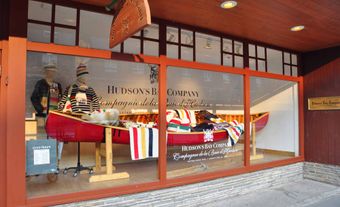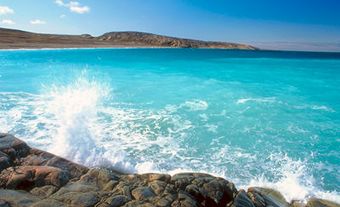
Early Life
Little is known about Henry Kelsey’s early life in England. In 1684, at the age of 17, Kelsey reportedly arrived in Canada as an apprentice for the Hudson’s Bay Company. Despite being in his late teens, he was described by the Company as “the Boy Henry Kelsey” as he might have been apprenticed previously, as young as age 10.
First Journeys: 1688–89
In 1684, Henry Kelsey was posted to York Fort. He made his first overland journey in the winter of 1688–89 when, with a young Dene boy, he carried Hudson’s Bay Company letters to the post at Fort Severn, about 300 km away. At a time when few, if any, HBC men travelled more than a short distance from a post, Kelsey became increasingly trusted as an inland traveller. In June of 1689, with the same Dene boy, he set off north from the HBC post at Churchill River. The two travelled overland along the Hudson Bay coast to the subarctic tundra of what is now northern Manitoba and southern Nunavut. They hoped to attract the trade of the Dene peoples in the region. When they didn’t meet any Dene, they returned to the Churchill River a month later.
Journey to the Plains: 1690–92

Henry Kelsey’s most famous journey took place from 1690 to 1692. He was sent by George Geyer, governor of York Fort, “to call, encourage, and invite, the remoter Indians to a Trade with us [sic].” In addition to encouraging trade, Kelsey was instructed to smooth relations between interior First Nations so that it might be easier for them to travel to Hudson Bay to trade. He was also to look for mines and minerals.
Kelsey was accompanied by Indigenous traders from York Fort, who were most likely Cree. Together they travelled by canoe and overland. They soon reached an area Kelsey called “deerings point,” named after HBC Deputy Governor Sir Edward Deering. The location of Deering’s Point was likely somewhere near the present-day community of The Pas, Manitoba. Kelsey used Deering’s Point as his starting place for further travels inland, primarily in search of a group the HBC referred to as the Naywatame. The Naywatame were most likely a Siouan-speaking peoples living on the plains. By late summer, Kelsey had met the Naywatame, but was ultimately unsuccessful in convincing them to travel the long distance to York Fort to trade.
Kelsey returned to York Fort in the summer of 1692, having travelled through parkland and prairie possibly as far as the Touchwood Hills in present-day Saskatchewan. Historians consider his two-year journey epic in terms of time and distances covered. That said, Kelsey’s expedition had little immediate commercial impact. It wasn’t until much later that Kelsey’s contacts helped extend the European fur trade across the Prairies.
Kelsey and Indigenous Peoples

During his travels, Henry Kelsey encountered members of the Cree, Assiniboine, Siksika (Blackfoot), A’aninin (Gros Ventre) and Naywatame nations. He was proficient in Cree and Assiniboine and is credited with compiling an early dictionary of the Cree language. His success as an explorer was due in part to his ability and willingness to interact with Indigenous peoples on more or less even footing. This was not a common trait among Europeans. At the time (and later), Indigenous peoples were often regarded as “savages.” The Hudson’s Bay Company saw in Kelsey a valuable intermediary, describing him as “a very active lad, delighting much in Indians’ company, being never better pleased than when he is travelling amongst them.”
Although he adapted well to the harsh conditions of overland travel, Kelsey’s story challenges the long-held view of explorers travelling alone through empty country. Like others who were to follow, he relied on the support of local groups and often journeyed with them as part of their seasonal movements. His success and survival were dependent on the goodwill of local inhabitants.
At the conclusion of his journals about his Prairie explorations, Kelsey wrote a short description of groups he referred to as the “Stone” (Assiniboine) and “Nayhaythaway” (Cree) peoples. Kelsey’s is the first such narrative in Western Canada. He wrote about Assiniboine and Cree material culture, medicine, and ceremonial singing. He also described rituals associated with war and hunting, and the role of women in society. Kelsey’s descriptions are arguably less Eurocentric than those of later writers such as James Isham and Andrew Graham; however, his brief narrative provides only the slightest glimpse of Indigenous life in the late 17th century.
Kelsey’s Journals
Henry Kelsey’s journal of his travels is famous in part because he wrote the beginning as an irregularly rhyming poem, unique among early exploration journals in Canada. Examples of Kelsey’s rhymed introduction include passages such as the following:
Then up ye River I with heavy heart
Did take my way & from all English part
To live amongst ye Natives of this place
If god permits me for one two years space
and:
At deerings point after the frost
I set up their a Certain Cross
In token of my being there
Cut out on it ye date of year
His descriptions of routes and locations are often puzzling and for decades historians have debated the extent of his travels throughout the western interior. For example, historians often argue about the location of “deerings point” and the actual extent of Kelsey’s journeys inland, as his journal is often unclear.
Kelsey kept a journal periodically for much of the rest of his life. What is known about his later employment with the Hudson’s Bay Company comes from his own writings, including letters, as well as Company correspondence and journals. Kelsey’s journal was only made public in 1926, when it was presented to the Public Records Office of Northern Ireland.
Later Career with the Hudson’s Bay Company
After a year in England, Henry Kelsey returned to York Fort in 1694. That same year he helped negotiate the terms of surrender of the fort to a French force led by Pierre Le Moyne d’Iberville. He went back to England the following year.
In 1696, Kelsey again returned to Hudson Bay. He joined a mixed Hudson’s Bay Company and Royal Navy fleet, and retook York from the French. In September 1697, the French again forced the surrender of York and once again Kelsey helped negotiate the terms of surrender with d’Iberville. Kelsey returned to England. In 1697, the Treaty of Ryswick ended hostilities between France and England. York remained under French control (and was renamed Fort Bourbon) until 1713, when the Treaty of Utrecht returned all HBC posts on Hudson and James bays to the English.
Meanwhile, in 1698 the Company sent Kelsey to Fort Albany on James Bay, the only post retained by the HBC during the 16 years of French control of the Hudson Bay fur trade. In 1703, Kelsey returned to England, where he remained on leave until 1705. He then re-enlisted with the HBC and served as chief trader at Albany until 1712. After two years in England Kelsey was appointed deputy governor of York Fort in 1714. When the governor of York Fort, James Knight, left to establish a new post at Churchill in 1717, Kelsey became governor of York. In 1718, Kelsey was made governor of all the HBC settlements on Hudson and James bays. Charges made by Knight against Kelsey in 1719, perhaps involving accusations of conducting a private trade in furs, were not pursued by the Company and Kelsey remained in charge until 1722.
Retirement and Later Life
In 1719 and again in 1721, Kelsey conducted northern voyages along the west cost of Hudson Bay. He hoped to establish trade with the Inuit, to determine the viability of a whale fishery, and to discover the copper mines that had long been rumoured to exist in the North. Trade with the Inuit proved limited, as did the whale fishery, and he found no evidence of copper.
In 1722, the HBC recalled Kelsey to England. Two years later Kelsey requested the captaincy of a Company ship destined for Hudson Bay, but the ship he hoped for never sailed.

 Share on Facebook
Share on Facebook Share on X
Share on X Share by Email
Share by Email Share on Google Classroom
Share on Google Classroom



